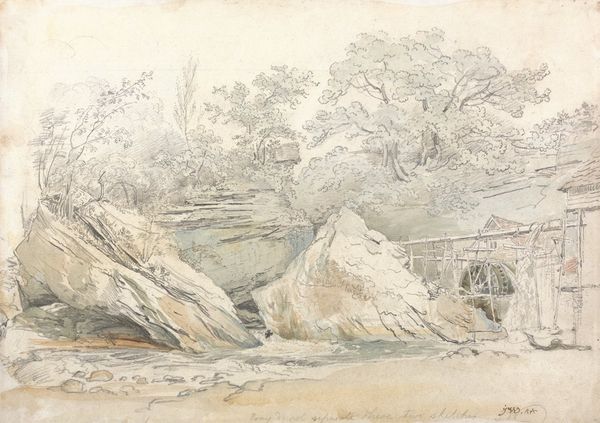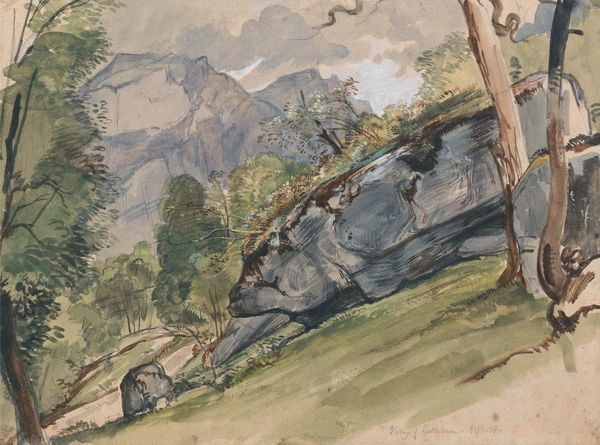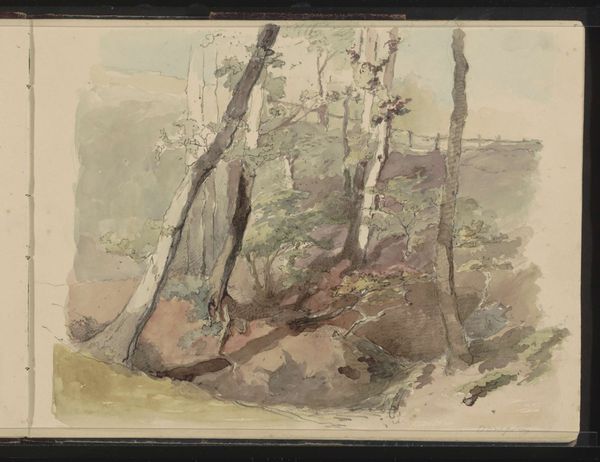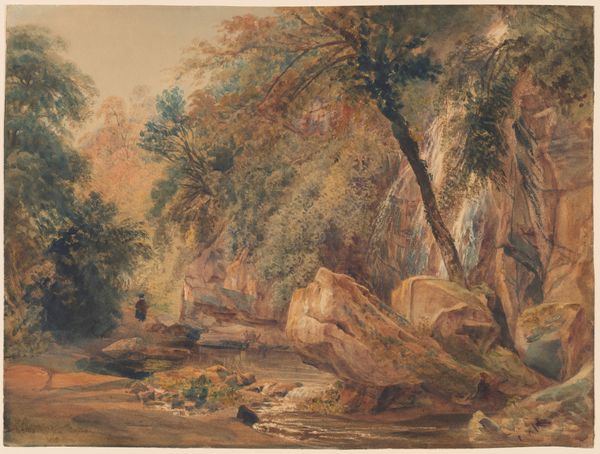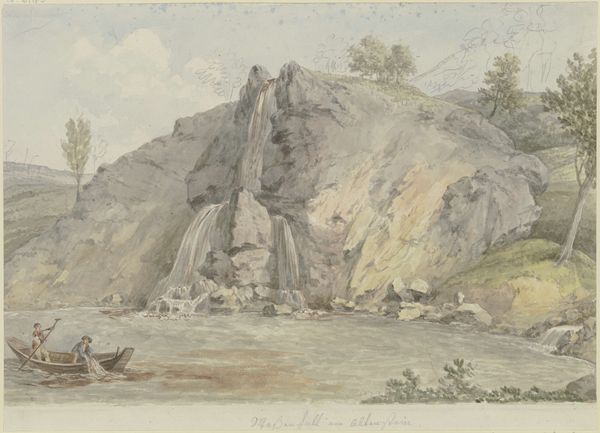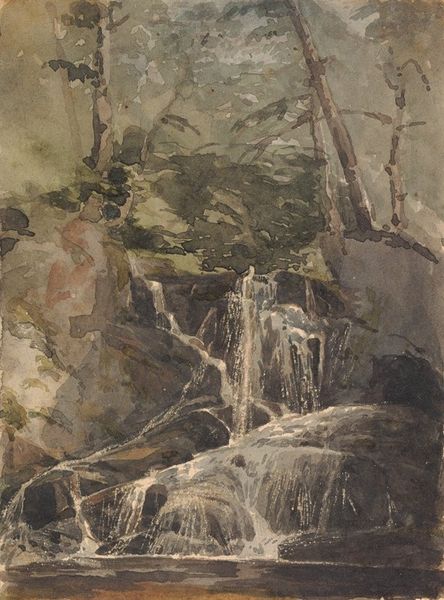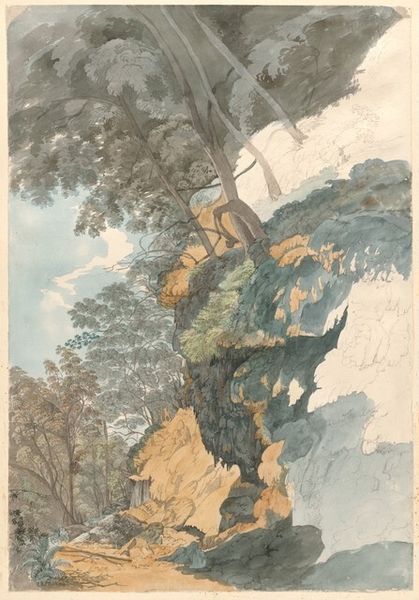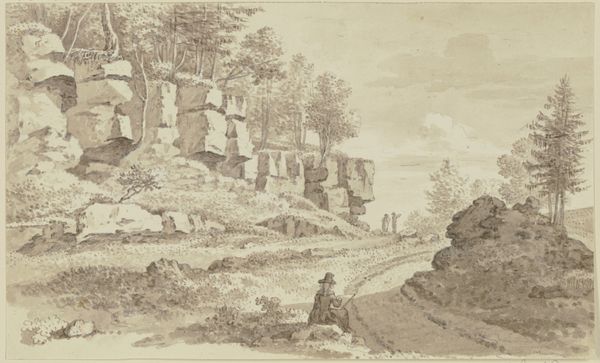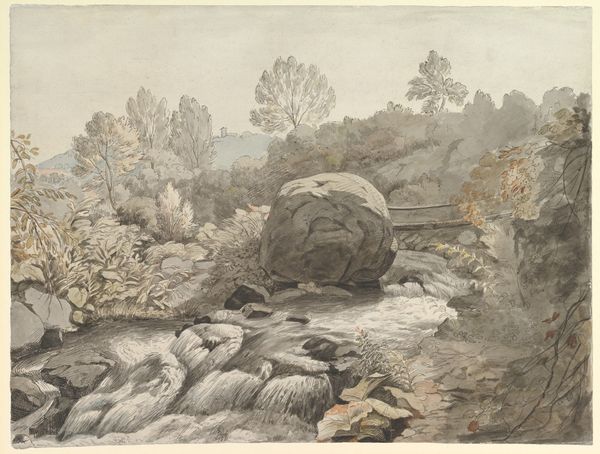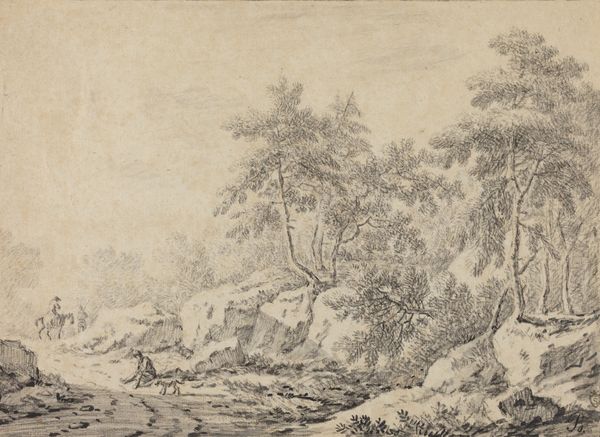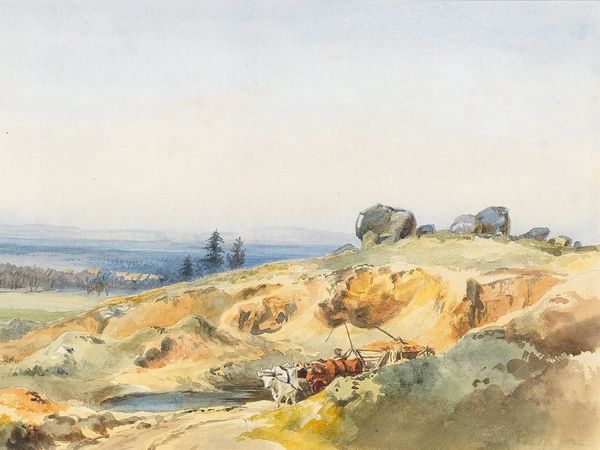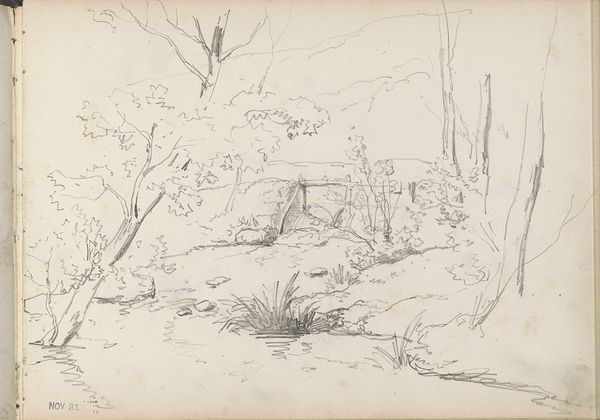
drawing, plein-air
#
drawing
#
16_19th-century
#
narrative-art
#
plein-air
#
landscape
#
charcoal drawing
#
figuration
#
hudson-river-school
#
genre-painting
#
watercolor
#
realism
Copyright: Public Domain: Artvee
Editor: Winslow Homer’s “Setting a Squirrel Trap,” dating back to 1858, captures a scene rendered in watercolor. It evokes a sense of hushed anticipation, primarily achieved through the interplay of light and shadow. What compositional elements do you find particularly striking? Curator: The artist's deployment of tonal variations is most compelling. Observe how Homer masterfully modulates the gradations of grey and brown, establishing a sense of depth and spatial complexity. The light doesn't merely illuminate; it sculpts form and directs the viewer's eye. Consider how the contrasting values define the mass of the rocks, foreground figures, and foliage, inviting scrutiny of form and the relationship between pictorial elements. Do you see how the composition creates a clear hierarchy? Editor: Yes, now that you mention it, the darks definitely push forward, guiding the eye toward the boys and the rock formation. Does the use of watercolor contribute a unique quality to the overall composition? Curator: Precisely. The fluid, translucent properties of watercolor allows for subtleties in texture and a sense of atmospheric perspective that would be difficult to achieve in other media. It lends the scene an immediacy, a feeling of having been captured en plein air. It highlights the delicate balance between control and spontaneity which in itself offers unique effects. Have you considered the structural parallels between the trap and the rock's contours? Editor: Not initially, but I see how the geometry suggests themes of artifice within nature. I find it insightful how the analysis goes beyond the representational aspects and delves into the formal language of the artwork. Curator: Formal analysis compels such observations. I hope this discussion clarifies that meaning is constructed as much through the artist's choices about line, color, and form as it is through the subject matter.
Comments
No comments
Be the first to comment and join the conversation on the ultimate creative platform.
